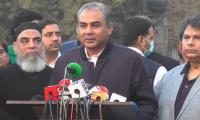mainstreaming is available to Pakistan via nuclear- weapon-related initiatives. Having succeeded in achieving the requirements of ‘strategic’ deterrence, Pakistan is in a position to consider nuclear initiatives that would clarify its commitment to strengthening nuclear norms, regimes, and practices, and would address widely held perceptions that its nuclear deterrence practices are a major source of danger in South Asia”.
It then goes on to propose five nuclear weapon related initiatives that Pakistan must take to be brought into the mainstream. These are: (1) alter its ‘declaratory’ policy from ‘full spectrum’ to ‘strategic’ deterrence; (2) reduce production of ‘short range delivery vehicles and tactical nuclear weapons’; (3) end its opposition to Fissile Material Cutoff Treaty negotiations and ‘reduce or stop’ fissile material production; (4) separate civilian and military nuclear programs; and (5) sign the Comprehensive Test Ban Treaty even if India does not do so. In a subsequent clarification of the proposals, the authors of the report said that the two most important points are: (a) the lifting of Pakistan’s opposition to the FMCT negotiations and stoppage of fissile material production, and (b) signing of the CTBT.
Looking at the various ideas and thoughts that have been put forward regarding the mainstreaming of Pakistan over the four years or so, the first point that comes to mind is that in all these studies Pakistan is seen as a country that has done something wrong, akin to an errant schoolboy who needs to be reprimanded and required to make amends to be brought back into the class.
We in Pakistan do not see ourselves in that manner. Instead of dictating to Pakistan what it should or should not do, the approach should be to negotiate with us. This is the approach that was adopted by the international community with Iran (P5+1 and Iran talks) and is also in operation with North Korea (the six-party talks). Pakistan should likewise be offered the opportunity of negotiations with the international community for it to be brought into the nuclear mainstream.
What is ignored is that the elephant in the room is India. Pakistan’s nuclear programme is security driven, and India poses the main security threat to Pakistan. The Indo-US nuclear deal, which it will be recalled was opposed by Michael Krepon and others in the US think tank community at the time it was initiated in 2005, has permanently disturbed the strategic balance in South Asia. Interestingly, India signing the CTBT is one of the requirements laid down in the deal.
India has studiously avoided signing the treaty so far and seems to have no intention of signing it in the future also. It may be added here that the CTBT has not been ratified by the United States itself, even after nearly twenty years of its adoption. As regards Pakistan, we came close to signing it in February 1999, but did not because of India’s unwillingness to do so.
The second important point in the proposals listed in the Carnegie-Stimson Report, relating to the stopping of production of fissile material and lifting of our veto on the FMCT negotiations in Geneva, is again a demand that does not take into account the broader picture and is thus unfair. There is no call for India to stop production of fissile material. In fact the waiver granted to India by the NSG, in the wake of its nuclear deal with the United States, has opened up the international market for India to obtain uranium and thus freed its own uranium stocks to be enriched to weapons grade enriched uranium without let or hindrance.
Regarding the FMCT negotiations, Pakistan has put forward its position in the Conference on Disarmament (CD) as to what it expects to be done for the process to commence. Finally, a somewhat sensational speculation in the report that Pakistan is likely to have the third largest nuclear arsenal in 5-10 years time is at odds with the academic and scholarly tenor of the report. In any case, the authors seem to overlook the likelihood of India’s nuclear arsenal being even bigger in that time span.
There is no need to discuss the other points of the proposal as they do not amount to much. Moreover, as explained above, all these reports and studies regarding Pakistan seem to adopt a stance that is not likely to be acceptable to Pakistan. The international community will have to recognise that merely dictating to Pakistan, without doing anything to correct the strategic imbalance in South Asia, has no chance of success.
The writer is the executive director of the Center for International Strategic Studies.
Email: sarwarnaqvi@yahoo.com
There is no information if rowdy Pakistanis involved in such incidents were actually dual nationals
This year alone, US Treasury would have to roll-over $10 to $14 trillion in maturing short-term debt
Tear gas no longer marks just protest sites; it paints entire cities as battlegrounds but then again, PTI did it first
Political structures and governance systems have been central to economic and social development
It is confirmed now 40 Pakistanis had died after boat of migrants had capsized in sea near Greece
Many people believe that in future, AI will play an even more significant role in their lives







